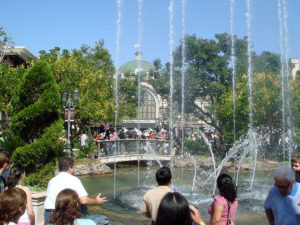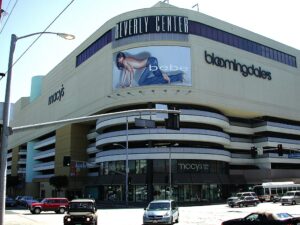The New Beverly Cinema is a historic movie theater located at 7165 Beverly Boulevard. Nestled in a building dating back to the 1920s, it’s one of the oldest ‘revival’ style houses in the region. Since 2007, it has been owned by filmmaker Quentin Tarantino.
For nearly 30 years, Sherman Torgan dedicated his life to sharing his love for cinema, transforming a simple venue into a true film school and cultural center through nightly double features of classic, foreign, independent, and arthouse films. Seeing Sherman at the box office was always a beloved spectacle for the city’s cinephiles. Following his untimely death in 2007, his son Michael took over the daily operations, heralding a new era for the theater. Michael continues to use his deep knowledge and passion to help manage the theater to this day.
After 10 years as the theater’s benefactor, Oscar-winning filmmaker Quentin Tarantino became the owner and head programmer of the venue. Fully committed to celluloid, Quentin made the unique decision to have the New Beverly exclusively project analog film copies. The writer and director declared: “I want the New Beverly to be a bastion for 35 mm films. I want it to stand for something. When you see a movie on the New Beverly’s calendar, you don’t have to wonder if it’s going to be shown in DCP or 35mm. You know it’s 35 because it’s the New Beverly.”
Tarantino said: “As long as I’m alive, and as long as I’m rich, the New Beverly will be there, showing 35mm double features.”
Though ticket prices haven’t changed in the two years since Quentin came on board, the New Beverly has undergone some changes. A small partition in the lobby was removed to now display large-format posters, mainly from France and Italy. The periscope projection system was removed, resulting in a sharper, brighter image. Four magnetic sound heads and a 16mm projector were installed, giving us the ability to show more film formats. Additionally, the concession stand was expanded, the carpet replaced, the seats reupholstered, and cup holders added.
Quentin personally selects the vast majority of the New Beverly’s monthly programming. He also started a weekend children’s matinee series and added midnight showings of his own work, promising “if you want to see one of my films in 35mm, any week of the year, there’s a place you can go.”
Some popular programming series that Quentin has scheduled include two months of blockbuster hits in tribute to ’90s cinema, such as ‘Shawtember’ (an action-packed Shaw Bros. retrospective), ‘Ozploitation’ (Australian exploitation), ‘Meeker Mania’ (an extended celebration of Ralph Meeker), and tributes to Richard Fleischer, Glenn Ford, John Cassavettes (as an actor), and much more. Quentin has also continued and expanded the highly popular Grindhouse Tuesdays, run for over a decade by the founder of the Hollywood Book and Poster Co, Eric Caidin and Brian Quinn, the manager of the New Beverly. Tuesdays remain one of the most popular nights for Los Angeles’s film community.
Many of the 35 and 16 mm copies shown are from Quentin’s own private collection. One of the main reasons Tarantino wanted to run the New Beverly was to share his collection with the public. Quentin said of it: “I have a huge collection of copies that I’ve been conserving for almost 20 years. And I want to show my copies! We’ll continue to borrow copies from studios and other collectors, but I like the idea that the base of what we’re doing will be my collection of copies. Some of them are absolutely amazing, and I want people to see them, to enjoy them.”
The New Beverly Cinema is not just a theater; it’s a living testament to the enduring allure of the silver screen. Its eclectic architecture, with classic neon signs and an old-fashioned ticket booth, transports patrons back in time, offering a nostalgic experience that contrasts sharply with modern multiplexes. Inside, the theater retains a vintage charm with its intimate setting and rich history, making every visit a unique journey into the world of cinema. This venue is more than just a place to watch movies; it’s a sanctuary for film lovers and a beacon of traditional film preservation in the digital age.


